Tyredagh Castle
Houses within 15km of this house
Displaying 94 houses.
Houses within 15km of Tyredagh Castle
Displaying 94 houses.
| House name | Description | |
|---|---|---|
| Ballygeagin House | In 1837 Lewis lists Ballygaggen as a residence of the Butler family. Timothy Killeen was renting the house in the townland of Ballygaagin, barony of Kiltartan, from Robert J. Lattey in 1855 when it was valued at £10. Though buildings still exist at the site the original house is not extant. | |
| Cregg House | The house at Cregg seems to have been built by Francis Butler in the 18th century. Wilson refers to it as the seat of Mr. Butler in 1786. In 1814 it was the residence of Walter Butler and Lewis also records it as a Butler house. At the time of Griffith's Valuation it was occupied by Robert J. Lattey and was valued at £25. This also included the premises known as Cregg Cottage which was located in the demesne. In 1906 it was owned by Robert Thomas Lattey and was valued at £33. The original house is no longer extant. |
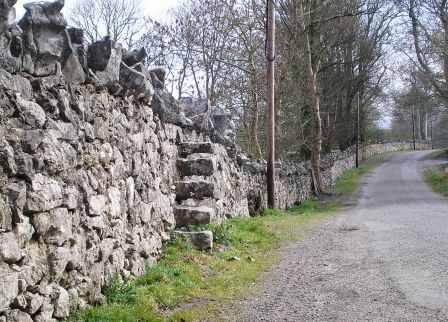
|
| Rosepark House | Tradition suggests that Francis Blake Forster let Clooneene (Ashfield) and built a house which he called Rosepark, after his wife, Rose Ffrench. Rosepark House is recorded by Lewis in 1837 as the seat of the Hugo family. It was leased by Michael Kane to George Crowe at the time of Griffith's Valuation. It was then valued at £12. Apart from some estate walls there is no evidence of this property now. | |
| Castle Lodge/Fiddane House | At the time of Griffith's Valuation the property at Fiddaun was occupied by Edward Blacquiere and was valued at £10. Castle Lodge is recorded as the home of Charles Lopdell in 1814. In 1837 Lewis also recorded it as a seat of the Lopdell family. It is labelled Castle Lodge on the 1st edition Ordnance Survey map but as Fiddane House on the later 25-inch map of the 1890s. It is still extant and occupied. |
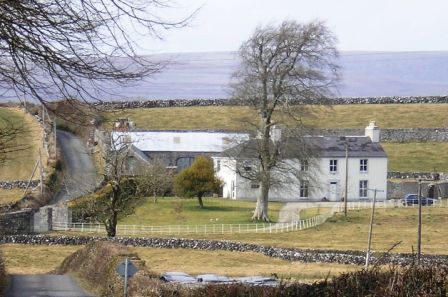
|
| Tiraloughan | In 1906 Lord Gough owned a property valued at almost £4 at Tiraloughin, parish of Beagh as well as over 100 acres of untenanted land. A house still exists at this location. | |
| Dangan | The main residence of the Creagh family in the 18th and 19th centuries, held by Cornelius Creagh in fee at the time of Griffith's Valuation when the house was valued at over £25.. Sold in the 1920s, the Irish Tourist Association Survey file records the house as dilapidated and going to ruin in the 1940s. Weir writes that the house was demolished in 1948. | |
| Rockview | In the possession of the O'Loghlens for most of the 19th century. John Kerin occupied the house in 1814, R. O'Loghlen in 1837 and Bryan O'Loghlen at the time of Griffith's Valuation. A house is still extant at this site. | |
| Derryowen | A home of a branch of the Lopdell family in the 19th century held in fee and of their descendants the Blaquieres in the late 19th and 20th centuries. In July 1889 the notice announcing its proposed sale in the Land Judges' Court describes it as "a very good newly-built dwelling-house, with suitable out-offices". There is still an occupied house at the site. | |
| Dromore | Occupied by Jonas Studdert, third son of Richard Studdert of Clonderalaw, in 1814. In 1795 Jonas married Mary Crowe of Dromore. The home of R. Crowe in 1837. Originally a hunting lodge Dromore became the main residence of the Crowes in the 1830s. The house was sold in 1936 and is now demolished. |
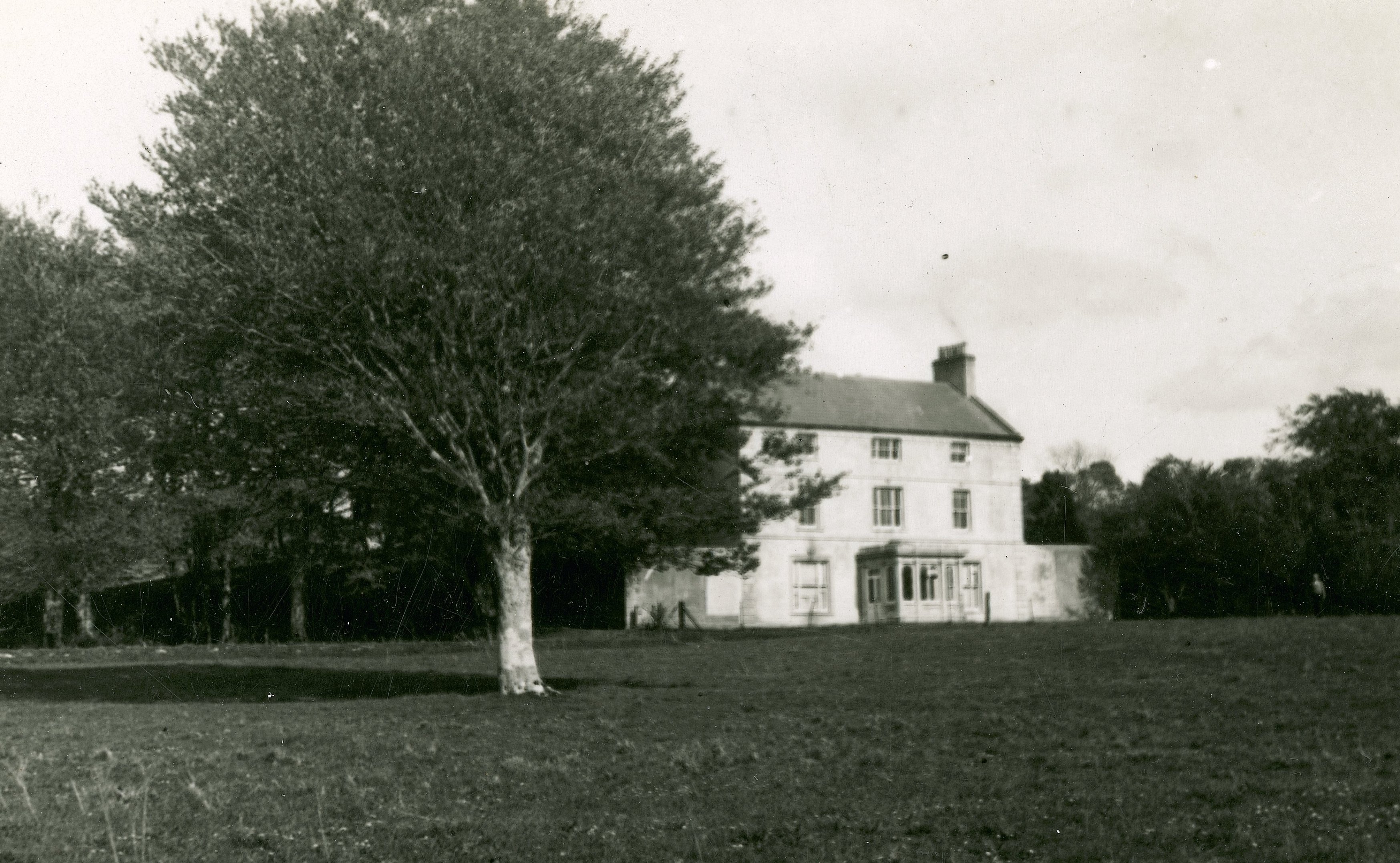
|
| Port | Home of the O'Loghlens in the latter part of the 18th century and first part of the 19th century. Hugh O'Loughlin was resident in 1814 and in 1837. The house was unoccupied at the time of Griffith's Valuation. Weir writes that the house and demesne were purchased by Jeremiah Kelly in the 1860s. |
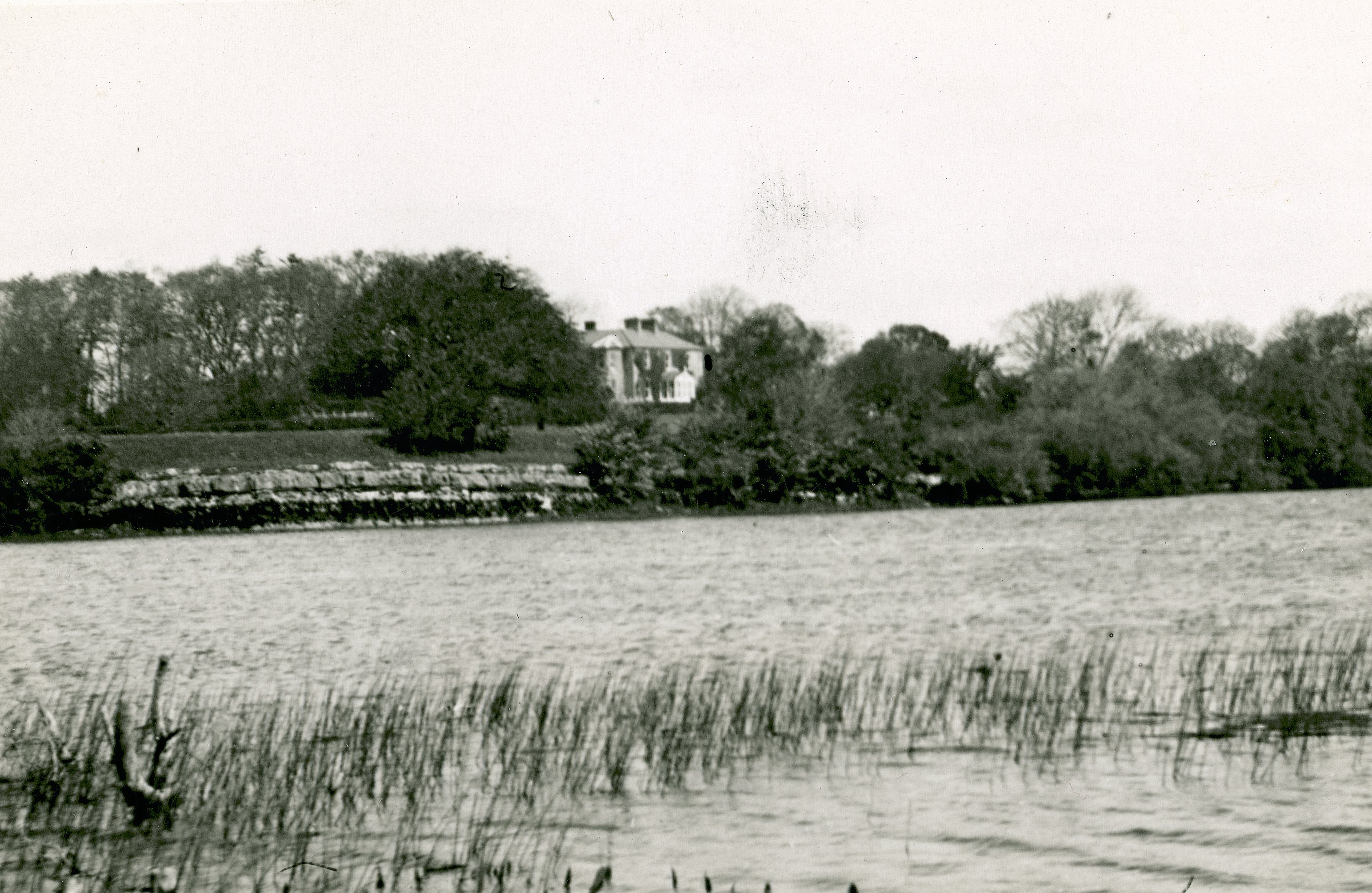
|
| Teernea | Hewitt Bridgeman, Member of Parliament for county Clare, lived here in 1837. By the time of Griffith's Valuation Myles O'Brien was leasing the house from Henry Dwyer. It was then valued at £8.10 shillings. | |
| Curragh House | A house on the Stafford O'Brien estate, the residence of the Faircloth family in the 19th century, valued at £9.10 shillings at the time of Griffith's Valuation. Accidentally burnt in the early 20th century. | |
| Toonagh House | A late 18th century house, occupied by Mr J. O'Brien in 1814 and by C. O'Brien in 1837. By the time of Griffith's Valuation Cornelius O'Brien was leasing the house to Henry William Lucas and it was valued at £19. By the mid 1870s Cornelius O'Brien's son in law William Henry McGrath owned Toonagh. The house was demolished in the mid 20th century. | |
| Claremount House | Claremount house and demesne were part of the Barntick estate. Occupied by Jonas Studdert in 1814 and by Wyndham F. Patterson at the time of Griffith's Valuation. His lease expired on 25 Mar 1857. It was then leased to the Lynch family. One descendant was Patrick Lynch, Senator of the Irish Free State and Attorney General of Ireland 1936-1940. | |
| Carnelly | An 18th century three-storey Georgian house, probably designed by Francis Bindon (1690-1765), home of the Stamer family in the 18th century and for much of the 19th century. In 1786 Wilson refer to it as the seat of William Stamer. It passed through marriage to Francis N. Burton of Carrigaholt and then to the O'Grady family. Carnelly House was let from 1840-1849 to John O’Brien of the Ballynalacken family, Member of Parliament for Limerick. His fifth son ‘Peter the Packer’, the notorious crown prosecutor, was born there in 1842. Peter O’Brien was appointed Attorney General in 1888, received a knighthood in 1891 and was created Baron Kilfenora in 1900. After 1922 distinguished historian Mr Justice Gleeson came to live at Carnelly and the Gleeson family are still resident. It was offered for sale in 2013. |

|
| Manus House | Weir writes that John Hartigan of Manusmore was the Clare County Surveyor. He died in 1756. Manusmore was occupied by Thomas Lynch in 1814 and by Terence Healy at the time of Griffith's Valuation. Other occupiers in the latter half of the 19th century were George Walton and Hugh Tarpey. The McInerneys of Ennis bought the farm in the 1890s and have lived there for over a hundred years. | |
| Manus South House | Weir writes that this house was built by the Healy family. It was occupied by James Healy at the time of Griffith's Valuation and was valued at £20. Both Healy houses at Manusmore were leased from Colonel George Wyndham. This house is now the home of the O'Halloran family. | |
| Shanvogh | Weir describes this house as 18th century. It was occupied by Timothy Cullinan at the time of Griffith's Valuation. He held it from the Marquess of Conyngham and it was valued at £12. The house is still extant. | |
| Hermitage | Another Keane residence near the town of Ennis, occupied by Francis Keane who held it from Marcus Keane at the time of Griffith's Valuation. In July 1857 Jonathon Gregg advertised the sale of the head rent of Hermitage and the surrounding 13 acres. Hermitage was advertised for sale again in October 1860 with 75 acres of town parks the estate of Christopher Plunkett, Dorothea Tottenham was the tenant. The sale rental records Francis Nathaniel Keane as the tenant. Hermitage was sold in the 20th century by the Keanes and was the property of John and Dorothy Madden in the 1980s. | |
| Cahircalla House | Occupied in the 18th century by the Crofts, England and Maguire families. The residence of David A. England in 1814 and of Charles Mahon in 1837. Griffith's Valuation shows that he held it from John Clancy. By the end of the 1860s Wainwright Crowe was in residence. Cahircalla Hospital now occupies the site, incorporating some of the earlier buildings. |

|
| Ashline Park | Robert Mahon son of Charles of Corbally and his wife Rebecca Crowe lived here in the mid 19th century. Griffith's Valuation shows the house valued at £18 and that it was held from the representatives of Michael Finucane. In the 20th century the house was the residence of the Catholic Bishop of Killaloe for some time. Weir writes that it was demolished circa 1968. | |
| Abbeyfield | A house in the town of Ennis, named Abbeyfield on the first Ordnance Survey map and Abbeyville by Samuel Lewis. In 1786 Wilson mentions that Lord Chief Justice Paterson had a residence in Ennis town. By the early 19th century it was being leased to Thomas Crowe. At the time of Griffith's Valuation the house was valued at £44 and was occupied by Wainwright Crowe who held it from Marcus Patterson. In the late 20th century it was used as a Garda station. |
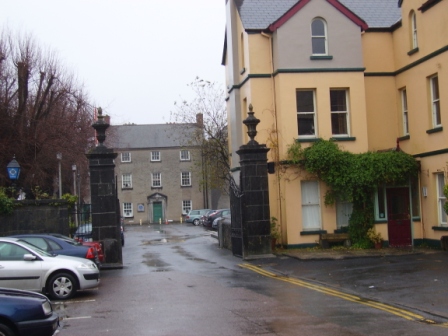
|
| Stamer Park | A home of the Stamer family in the 18th century which was occupied by Daniel Finucane, Secretary to the Clare Grand Jury, by the beginning of the 19th century. Daniel's son Michael was resident in 1837. By 1860 Captain William Stacpoole who was elected Member of Parliament for Ennis was living in the house. The house is still extant. |
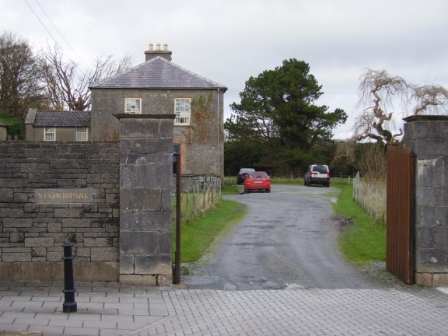
|
| Clonroad | A 17th century house in the possession of the Gore family from 1712 until 1852. The house was close to the River Fergus and had a brewery beside it. At the time of Griffith's Valuation the Gores were leasing the house and brewery to William Digges and the house was occupied by Henry Greene. In the 20th century the house which was rebuilt and extended in the mid 19th century belonged to the Knox and Merry families. | |
| Lifford House | Weir writes that in 1722 Francis Gore leased Lifford to Richard England. Patrick England was High Sheriff of the county in 1749. In 1786 Wilson refers to Lifford as the seat of Mr. England. By the early 19th century the Right Honourable Matthias Finucane was resident at Lifford House. Honoria Slattery, the common law wife, of Andrew Finucane, son of Matthias, occupied the house at the time of Griffith's Valuation. It was valued at £20 and was held from Sir Richard England. Weir writes that the house was demolished in 1965. | |
| Castlecrine | Weir writes that this was an 18th century residence possibly incorporating the 16th century tower. Castlecrine was the home of a branch of the Butler family for most of the 18th and 19th centuries, valued at £45 at the time of Griffith's Valuation, it was demolished in the mid 20th century. |

|
| Castlelake | Home of the Gabbett family in the 19th century, occupied by Robert Gabbett in 1814 and by John Gabbett in 1837 and in the 1850s. They held the property from the Westropp family with whom they intermarried. Home of the Carroll family in the second half of the 20th century, still occupied. | |
| Ballysheen | A house on the Vandeleur estate, occupied by the Walton family for most of the 19th century. Occupied by George Perry in 1814. Valued at £10 at the time of Griffith's Valuation it was renovated in the 20th century. Labelled as Walton Lodge on the 25-inch Ordnance Survey map of the 1890s. |
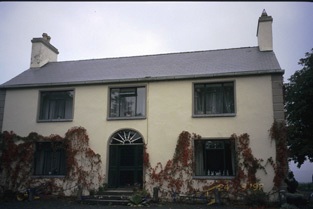
|
| Ballygirreen | At the time of Griffith's Valuation Ballygirreen was occupied by Francis O'Donohoe who held the property from Lord Inchiquin. The value of the buildings was £12 in the mid 1850s and in 1906. A house is still extant at the site. | |
| Kilkishen | An 18th century house that passed into the Studdert's possession throught a marriage with a Cusack of Kilkishen. The house was valued at £40 in the mid 19th century. Slater notes it as the residence of Maj. R.A. Studdert in 1894. It remained a Studdert home until sold to the Binghams in the 1920s. A house is still extant at the site. |
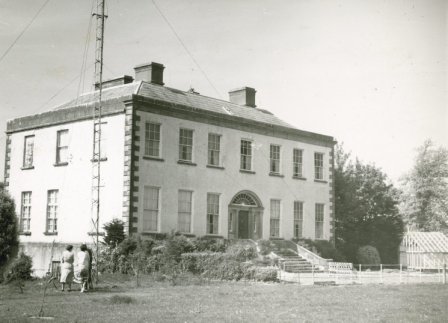
|
| Dromoland | This branch of the O'Briens have lived at Dromoland since the 17th century when they moved from Leamaneh Castle near Corofin to Dromoland. The present building was constructed in the 1830s to the design of James and George Richard Pain replacing an earlier house. In 1962 it was sold to Bernard McDonough, an American of Irish descent, who turned it into a top class hotel. The present Baron Inchiquin lives in Thomond House nearby. |
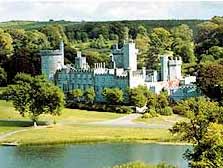
|
| Latoon House | A 19th century house on the O'Brien estate, occupied by John Lynch in the mid 1850s and valued at £18. | |
| Ballycar | Home of the Colpoys family in the 18th and early 19th centuries. Wilson refers to it as the seat of Mr. Colpoys in 1786. It passed by marriage to the O'Callaghan family. The sale rental of 1850 describes Ballycar as a cottage style residence with 'a fine garden attached'. By the time of Griffith's Valuation the house was occupied by Edward Bennett who held the property from the Misses Abbott. At this time it was valued at £18. A house is still extant at the site. | |
| Fenloe House | A red brick two storey 18th century house, home of the Hickman family for the 18th and 19th centuries. Hugh Poole Hickman was the occupier in 1837 and at the time of Griffith's Valuation, when the house was valued at £28. He held the property from William Westby. |
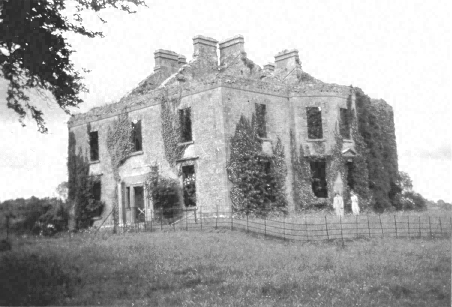
|
| Granaghan | The home of the Hewitt family on the Moloney estate. Mr Tim Donoghoe was the occupier in 1814 The old house is now largely demolished and a new house has been erected on the site. The house valued at £12 was held by Thomas Hewitt from Croasdaile Moloney in the mid 19th century. | |
| Cranagher | Originally a Bindon home this property passed to the Blood family through a marriage in the 1770s. In 1814 it was occupied by Mr James Kerin and in the mid 19th century by Giles Darcy who held it from William Blood. The house was valued at less than £2. There is a substanial house and demesne marked on the first Ordnance Survey map at Cranagher. Weir writes that a new house was started sometime in the 19th century a short distance from the original but was abandoned before completion. General Sir Bindon Blood sold Cranagher in 1905. Some farm building and modern houses exist at the site now. | |
| Castletown House | The original house is now demolished and a 20th century house stands on the site close to an old Macnamara castle. The house was occupied by Francis Macnamara in 1814 and by Robert Malcolm in the mid 19th century who held it from Colonel George Wyndham. It was valued at £10. | |
| Castlefergus | A Blood Smyth property from the late 18th century, sold by the Blood Smyth to the Bloods of Ballykilty in the early 20th century. This house was occupied by Daniel Powell in 1814 but the Blood Smyths were in residence in the 1830s and 1850s. They appear to have held the property from Ralph Westropp. The mansion house of Castlefergus was in the possession of Rev William Blood Smith in 1906. The Irish Tourist Association Survey File records that the house was demolished by the Irish Land Commission. | |
| Moyriesk | Lewis writes that the finely wooded property of Lord Fitzgerald and Vesey was bought by his father from the Macnamaras. Occupied by George Sampson at the time of Griffith's Valuation, when it was valued at £35. Moyriesk was accidently burnt in 1875 though Slater still notes it as a property owned by them in 1894. |

|
| Ballyline | Weir writes that this house was also known as Millbrook. It was occupied by Henry Butler in 1814 but had reverted back to another branch of the family by 1837 when Austin Butler was the proprietor. Austin Butler held the house in fee at the time of Griffith's Valuation, when it was valued at £15. The representatives of Theobald Butler held the house and 428 acres of untenanted land in 1906. The house was demolished by the Land Commission before the 1940s and the land divided. | |
| Tooreen | Originally a residence of Augustine Fitzgerald, occupied by John Kerin in 1814 and by W. O'Connell in 1837. James Hynes was in possession of the house in the mid 19th century. He held it from Maurice O'Connell and it was valued at £10. It is now a ruin. | |
| Ballyallia | An 18th century house, occupied by Andrew Kerin in 1814. It then became the home of Andrew Stacpoole and was owned by William Stacpoole in fee in the mid 19th century when the buildings, which included a house, steward's house, office and gate lodge, were valued at over £41. By the end of the 19th century the Vere O'Briens were living in the house. The house was considerably altered in the 1970s. | |
| Cloonteen | A house in the townland of Cloonteen is named Ballyallia on the first Ordnance Survey map. It was valued at £30 and was held by John Enright in fee at the time of Griffith's Valuation, now a ruin. Weir called this residence Templemaley House, the name by which it is labelled on the 25-inch map of the 1890s. | |
| Brookville | Occupied by Charles Janns in 1814, by J. Mahon in 1837 and by Luke Brady who held the property from Anne and Eliza Griffin at the time of Griffith's Valuation when it was valued at £16. | |
| Newpark | This house was built in the mid 18th century by the Hickman family. By 1814 it was been leased to the Mahon family who included James Patrick 'The O'Gorman Mahon', associate of Daniel O'Connell. Occupied by William Mahon who held it from Thomas Persse in the mid 19th century. Purchased by the Barron family in the early 20th century. The house now provides guest accommodation. see http://www.newparkhouse.com/newpage1.htm |
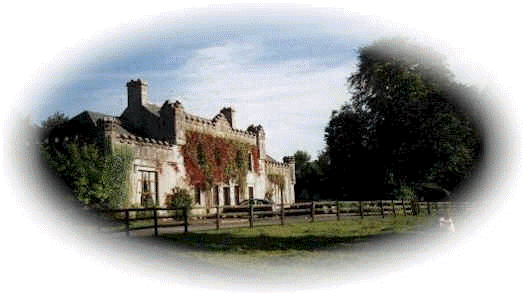
|
| Larch Hill | A house valued at £20 at the time of Griffith's Valuation and occupied by Captain Charles William Gore, fourth son of Francis Gore of Derrymore. He held the property from Lucinda Finucane. Later leased by the Finucanes to Charles Armstrong, fourth son of William Henry Armstrong of Mount Heaton and New Hall. A new house built in the 1980s now occupies the site. |

|
| Nutfield | A large three storey residence, Nutfield belonged to the Crowe family at the end of the 18th century and up to at least 1814 when it was the residence of Robert Crowe. Wilson refers to it and another house, which he calls Dromquin, as residences of the Crow family. He may be referring to Dromore House. By the mid 19th century Nutfield was the home of Sir Colman O'Loghlen who held it in fee. The buildings were valued at £40. The house is no longer extant. This house was also known as Drumconora. On the Taylor and Skinner map of 1778 it is named Nutgrove. | |
| Hazelwood | Occupied by Hugh Singleton in the mid 19th century and held from the representatives of Charles Mahon. The buildings were valued at £31. The house remained a Singleton residence until it was burnt in 1921. | |
| Clooney House | Originally a 17th century house, the home of the Bindon family, it was burnt in the 19th century. Lewis refers to "Clonie, the demesne of Burton Bindon" in 1837. At the time of Griffith's Valuation the house was unoccupied and William S. Vesey Fitzgerald was the immediate lessor. Rebuilt in the latter half of the 19th century by Joseph Hall and his wife Ellen Bindon. The house was bought by the Tuckeys following the death of Joseph Hall in 1907, the land was divided in the 1920s and the house went to ruin. |
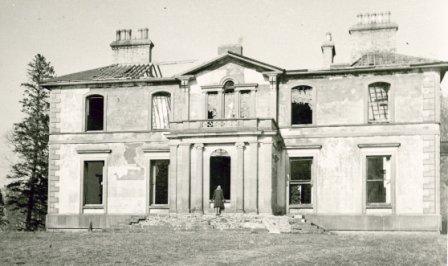
|
| Corbally | The Spaights were resident at Corbally from the latter part of the 18th century. Poole Gabbett was resident here in the first decade of the 19th century. Griffith's Valuation show that the Spaights held Corbally from the Mahon family "of Corbally". The house appears to have reverted back to the Mahons in the later part of the 19th century. Slater notes it as the residence of George T.M Stacpoole in 1894. | |
| Toonagh | A home of a branch of the Miller family, probably descended from Henry Miller, uncle to Sir John Riggs Miller. By the mid 19th century Toonagh was unoccupied and the surrounding land was in the possession of John Blood Smyth who held it from William C. Judd. The house is still a residence. | |
| Ballykilty | A McMahon residence in the 1730s, In 1786 Wilson notes it as the seat of Mr. McMahon. Weir writes that the lease of Ballykilty was purchased by John Blood in 1785. Occupied by Robert Young in 1814 and by John Blood in 1837 and at the time of Griffith's Valuation. He held the property from William Monsell. The front of the house was replaced following a fire in the 19th century. Functioned as a hotel in the latter part of the 20th century and now the site of a major hotel development. | |
| Brook Lodge/Dangan Ville | Occupied by William O'Connell in 1814 and by Pierce O'Brien who held it from Pierce Creagh in the mid 19th century, when the house was valued at over £13. By the 1870s this house, which is labelled Brooke Lodge on the 25-inch map of the 1890s, was the residence of Nicholas Henry Martin. A house is still extant at this site. | |
| Craggaunowen Castle | 16th century tower house, "in ruins" at the time of the first Ordnance Survey. The castle, herd's house and 96 acres were in the possession of the Reverend William Ashworth in the mid 19th century, who held them from a Caswell. A mansion house valued at £13 was in the possession of Count James Considine in 1906. The castle was bought by John Hunt in the mid 1960s and was the first home of the Hunt Museum. | |
| Cullane House | A house built in the 1780s, also known as Lough O'Connell. It was the home of Thomas Steele and in 1821 passed to his nephew "Honest Tom" Steele, friend of Daniel O'Connell. In the late 1840s Cullane was inherited by Tom Steele's niece who had married Charles Studdert of Newmarket House. Their son Robert Wogan Studdert held the house valued at £25 in fee at the time of Griffith's Valuation. It remained in Studdert hands until 1954 and is now a ruin. | |
| Knappogue Castle | A Macnamara castle until the early 19th century, it was sold to the Scotts of Cahircon in 1800. In the possession of William Scott by 1837. Lewis writes that the castle formerly belonged to the Macnamaras of Moyriesk and that it "is one of few ancient castles still inhabited". Weir writes that a ten bay residence was added to the tower house in the early 19th century. The sale rental of 1854 records George Sampson as tenant and that £8,000 had recently been spent on the building. By the mid 19th century Lord Dunboyne held the Castle valued at £36 in fee. In the mid 1960s the Castle was developed as a banqueting centre for tourists and continues to function in this role today. http://www.gardensireland.com/knappogue-castle.html |
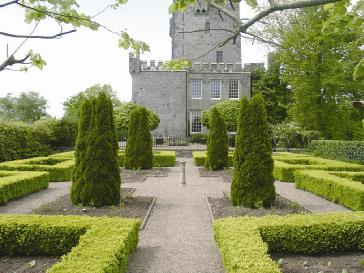
|
| Quinville House | An 18th century house, Lewis writes that it was rebuilt in the early 19th century in the Elizabethean style, home of the Singleton family. In 1906 Quinville was in the possession of James Butler Ievers. The property was bought by the McCausland family of Drenagh, county Derry in the 20th century. In the late 1990s the house was undergoing a major restoration by the owners, the Houlihan family. in 2012 it was offered for sale. |

|
| Rathluby | By the end of the 18th century Rathluby was in the possession of the Bridgeman family. The buildings were valued at £5 at the time of Griffith's Valuation when Henry Bridgeman occupied the house which he held from Eliza Piercey and it continued to be a Bridgeman home until the end of the 19th century. The house is now a ruin. | |
| Belvoir | Belvoir was an early 19th century house on the same site as an earlier building. It was the home of the Wilson family, valued at £32 in the mid 19th century. The house was burnt in 1888 when leased by the Wilson Lynches to Lady Loftus. It was not rebuilt though recorded as the seat of Maj. Wilson Lynch in 1894. Members of the Wilson Lynch family continued to live in the remaining wing until the mid 20th century. It is now a ruin. |
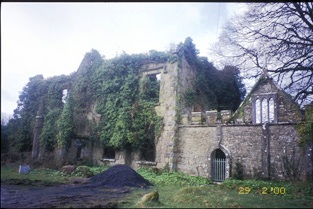
|
| Glenwood | Weir records Poole Gabbett in residence in 1810, Basil Davoren occupied the house in 1837 and John Gabbett at the time of Griffith's Valuation. He held it from George Studdert and it was valued at £10. Alice Studdert married General Frederick Maunsell and they lived at Glenwood which passed to their son Robert Maunsell. This house was the scene of an ambush in which eight Black and Tans were killed in 1920. The house no longer exists. | |
| Hurdleston/Hurdlestown | This was the seat of the Bentley family in the 18th and 19th centuries. The present house dates form 1871 and may well incorporate parts of the former house. The buildings were valued at £40 in 1906. Restored at the end of the 20th century. |

|
| Violet Hill | Home of James Going and his wife Jane Patterson from at least 1837. Occupied by their third son Wyndham Quin Going in the mid 19th century when the buildings were valued at £20. The house remained the property of the Going family until it was sold in 1924, now a ruin. | |
| Woodfield | Built c 1720s by the Bridgeman family and sold by them to the Reverend M. Locke in 1780. Wilson records it as his seat in 1786. The house was bought by William James O'Brien in 1802. He died in 1822 and the house was occupied by C. Walker in 1837. By the mid 19th century Thomas W. Butterfield was leasing it from the Reverend Savage Hall who had married Anne O'Brien. The buildings were valued at £22. It remained in the possession of the Hall family until at least the late 19th century, it was leased to the Bourke family. This house was advertised for sale in January 2009. |

|
| Mount Baylee | In 1837 the residence of H. Bayley. Occupied by Susannah Baylee at the time of Griffith's Valuation, who held it from Henry Thomas Baylee. The buildings were valued at £8. Weir writes that in the 20th century Miss Edie Baylee married the father of the architect Percy le Clerc. The house is still lived in. | |
| Sunville | Occupied by T. Studdert in 1837 and by Robert Hanley at the time of Grifftith's Valuation who held the property from Thomas Prosser. Also known as Sion Ville. A building is still extant at the site. | |
| Doon House | A seat of Sir Hugh Dillon Massy in the 1780s, leased to Richard Harte in 1814 and the Reverend W. Butler in 1837. Weir writes that the house was rebuilt by Richard Bentley in 1845. Griffith's Valuation records Richard Bentley as the occupier, he held it from Sir Hugh Dillon Massy. The buildings were valued at £18. The house belonged to the Whitehead family in the early 20th century and was later demolished. | |
| Ayle | The home of a branch of the Macnamara family in the 18th and 19th centuries. It was advertised for sale in 1850 and Griffith's Valuation records Joseph Browne as the occupier. He held the property in fee, the buildings were valued at £14. Weir writes that the original house was demolished and that the house now standing which was occupied by the Walshes, agents to the Macnamaras, was uninhabited. see http://www.thisoldhouse.com/toh/article/0,,568230,00.html | |
| Knockbeha Cottage | A house situated on the Molony estate at the time of Griffith's Valuation. occupied by John McArthur and valued at £16. Weir writes that it was used as a shooting lodge and an R.I.C. barracks. A modern house has been erected on the site. Another house is also marked on the first Ordnance Survey map 1842 at R575 910. | |
| St Catherines | An O'Callaghan property from the 18th century, George O'Callaghan was residing at St Catherines in 1814 and D. Sampson in 1837. Burkes 1904 records George's brother Edward "of Coolready" and he was married to a Miss Sampson. At the time of Griffith's Valuation the house was unoccupied and Ralph Westropp was the immediate lessor. The buildings were valued at £24. Only the servants' quarters now remain and have been converted into a family home. |

|
| Coolreagh | In 1814 Coolrea was occupied by Cor O'Callaghan and in 1837 by Ralph Westropp, who was leasing the property to Robert Studdert by the mid 19th century. The buildings were valued at £28. At the end of the 19th century it was the home of Colonel George O'Callaghan Westropp. The East Clare golf clubhouse now occupies the site, possibly incorporating some of the old house. |

|
| Fort Edward | Built post the first Ordnance Survey probably by a member of the Westropp family. Occupied by Dr Patrick Cullinan at the time of Griffith's Valuation who held it from the Reverend John Gleeson. The house is still inhabited and well maintained. |
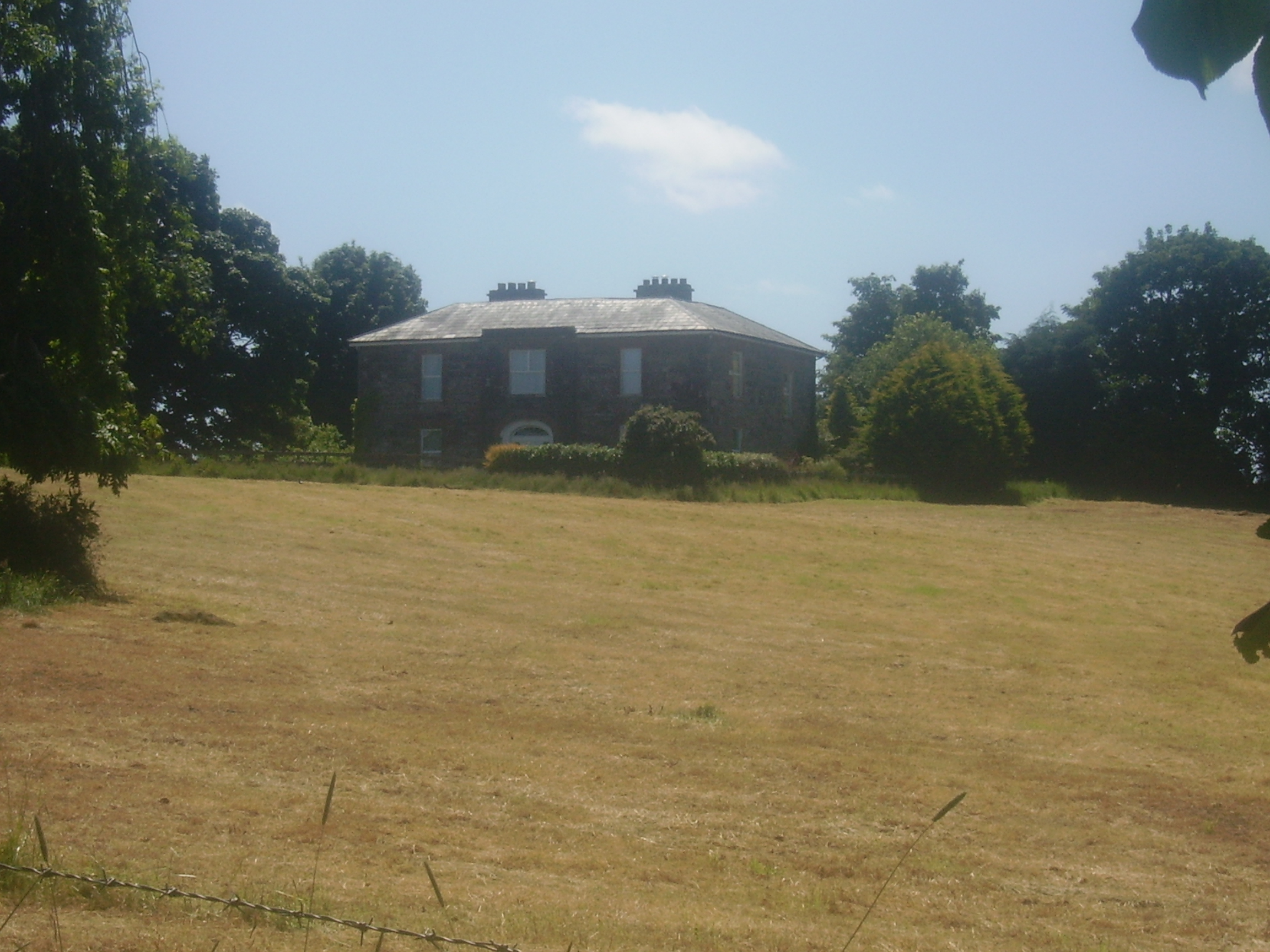
|
| Ballinahinch | A branch of the Molony family appear to have occupied Ballinahinch for some time in the 18th century. Occupied by Cornelius O'Callaghan in 1814 and 1837 and by his son Charles George in the mid to late 19th century. It is recorded as his seat in 1894. By 1906 Ballynahinch mansion house valued at £45 was in the possession of the Gore family. Weir writes that owners left when the "Troubles" began early in the 20th century and the house was vandalised. It was later demolished. The yard buildings remain and are still in use. |
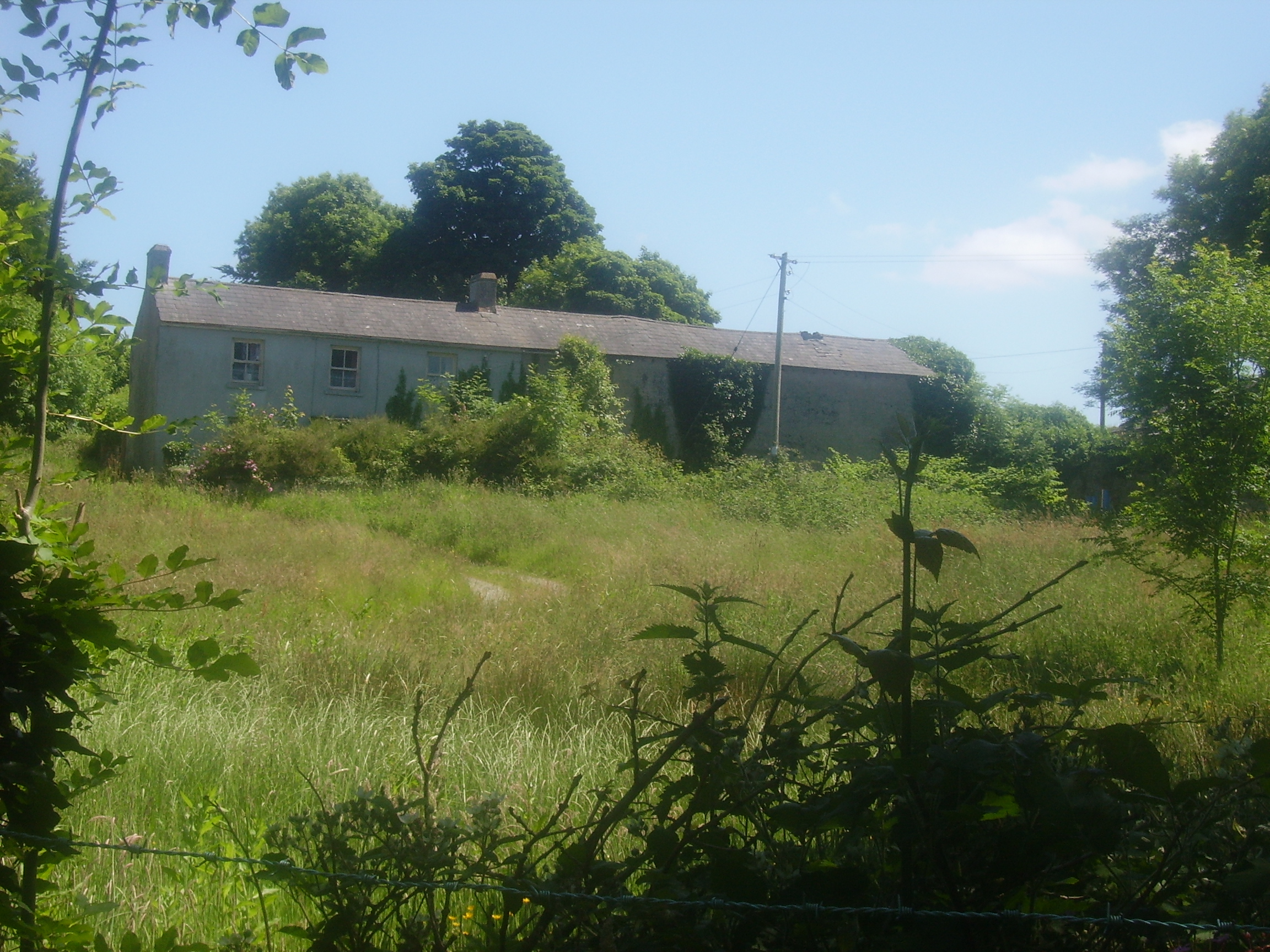
|
| Derrymore | The MacGraths had a 17th century home here which was incorporated into the servants' quarters when the Gores built their 18th century mansion. They continued to occupy the house until the early 20th century. The 17th century house and servants' quarters still stand but the rest of the house has been demolished. Some of the stone and stone features from Derrymore were taken to build a house near Drewsborough on the outskirts of Scarriff, Discovery Map 58, R637 836. | |
| Kilgory | The main residence of the O'Callaghan family in the 18th century situated on the shore of Kilgory Lough. In 1786 Wilson refers to it as the seat of Mr. Callaghan. Towards the end of the century the house became the residence of the O'Connells. Colman O'Loghlen married a sister of Daniel O'Connell of Kilgory before 1783. In 1814 Kilgory was the home of Daniel O'Connell and in 1837 Maurice O'Connell was the proprietor. It continued to belong to the O'Connells for the rest of the 19th century. Weir writes that most of the house was demolished in 1928. | |
| Newgrove | Home of the Browne family in the 18th century and for the first half of the 19th century. In the 1850s this 18th century house, valued at £30 was in the possession of Eliza Browne, widow of Thomas Browne of Newgrove who died in 1847. Mrs Browne died in 1864 and the house and estate passed to the Brady family. Only some walls of the house remain. |

|
| Bunavory | A house on the Molony estate, occupied by William Scanlan in the 1850s. The house is now divided into two residences. | |
| Cragg | Home of a branch of the Molony family from the 1730s to the early 20th century. The house is still extant and lived in. It was valued at over £14 in the mid 19th century when it was held by Anne Molony in fee. | |
| Fort Anne | An 18th century house that was in the possession of Robert Westropp, eldest son of Poole and Mary Westropp, by 1814. His son John, who married Maria Macnamara, was occuping the house in 1837 and their son Robert was resident in the mid 1850s. Robert Westropp held the property in fee and the buildings were valued at £25. This house passed into the possession of the O'Callaghan Westropp family. It no longer exists. | |
| Kiltanon | Kiltanon was the home of the Molony family for at least two centuries. The house built in 1833 had a drive which linked it to the other nearby Molony residences at Bunavory and Cragg. The house was burnt in September 1920 and is now a ruin. In the second half of the 19th century another house, known as the Home Farm House, was built at Kiltanon for Marcus Molony, eight son of James Molony and his agent. This house is still extant. |

|
| Nutgrove Cottage | Another Molony house in the townland of Kiltanon, occupied by James Robb at the time of Griffith's Valuation, when it was valued at £20, now a ruin. | |
| Maryfort | An early 18th century house with late 19th century embellishments, home of the Westropps. By the early 19th century it was occupied by John O'Callaghan (died 1818) who seems to have moved there from Kilgory. Occupied by his grandson John O'Callaghan at the time of Griffith's Valuation, valued at £35 and held from George Westropp. In the 20th century it was the home of his son Colonel George O'Callaghan who assumed the additional name of Westropp. Weir writes that the house was demolished in 1967 by Colonel Conor J. O'Callaghan Westropp, the last member of the family to live there. |
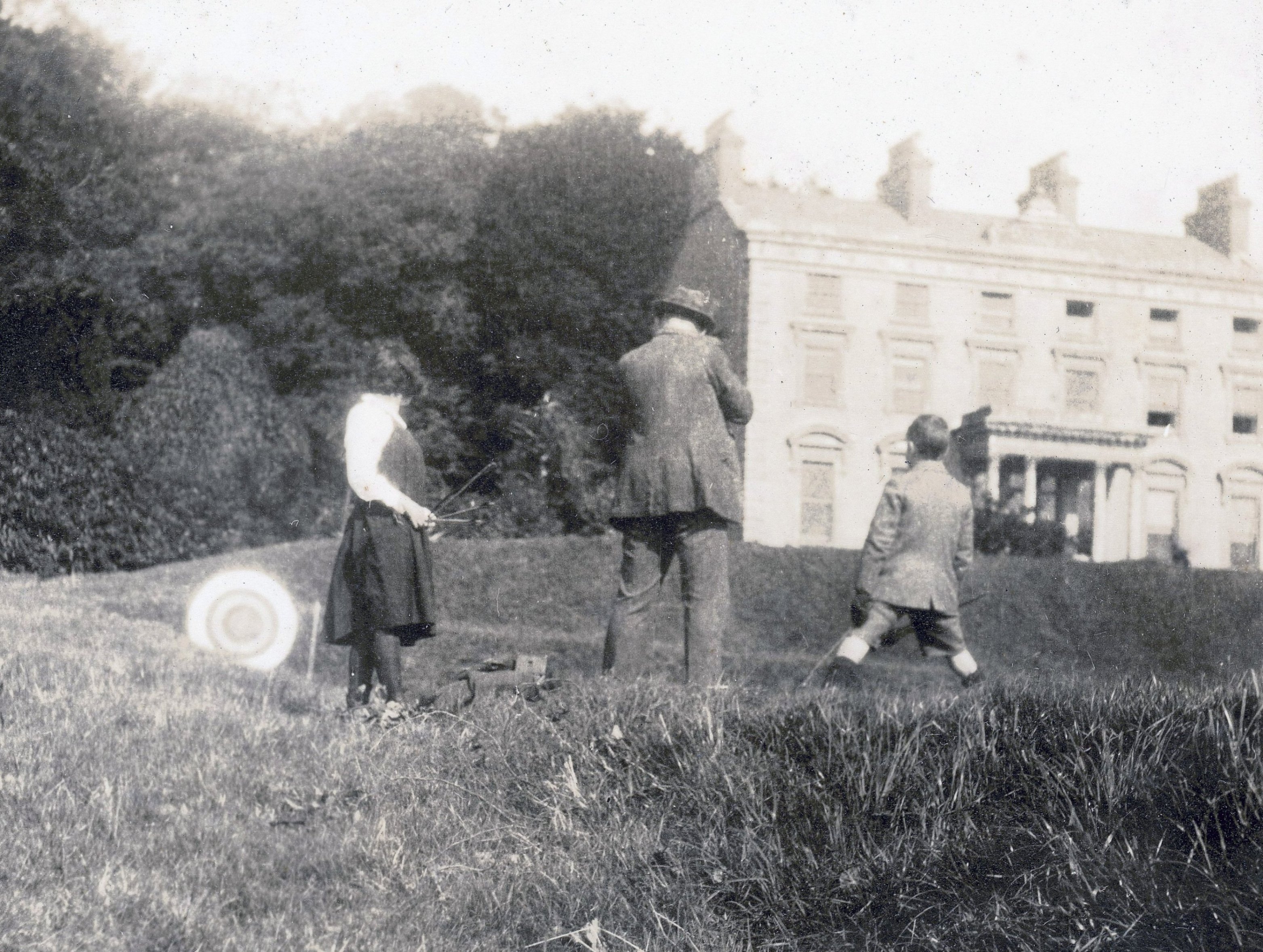
|
| Rosslevan | This house, close to the town of Ennis, was the residence of Francis Swyny in 1814. Rosslevan was occupied by Michael Kerin at the time of Griffith's Valuation. He held the property from the Reverend James Rynd. Rosslevan would appear to have been the home of the Davis family for some time in the 19th century. Members of the Davis family emigrated to Australia and called their new home Rosslevan. The sale rental of January 1875 records that the house had been "improved lately" and had eight bedrooms and three sitting rooms. Weir writes that Edward O'Brien, third son of the 14th Baron Inchiquin lived in the house before it was burnt in 1922. It is now a ruin. |
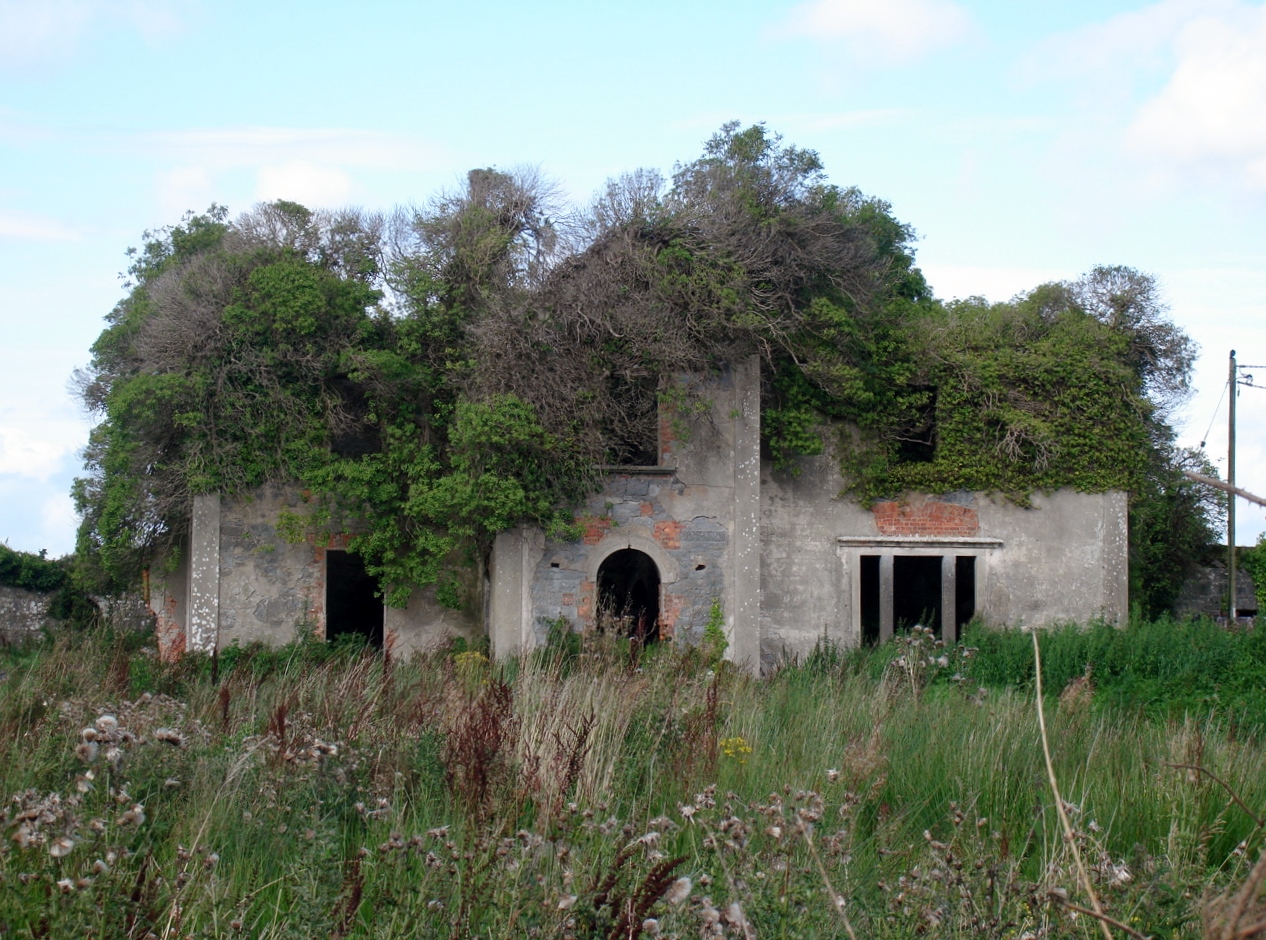
|
| Harmony House | The residence of Patrick Maxwell Cullinan on the River Fergus in Ennis in the 1870s. Local sources indicate he afterwards moved to Cragleigh House. | |
| Kilbarron | A property originally associated with the Ryan family. Mr Robert McGrath was residing at Kilbaron in 1814 and in 1837 Lewis records that E. McGrath rebuilt the house "on the site of the old mansion". At the time of Griffith's Valuation the buildings valued at £6.5 shillings were held by Edward McGrath in fee. The house is now a ruin. | |
| Bunnahow | The home of a branch of the Butler family in the 18th and 19th centuries, which Weir writes was rebuilt in 1808. Occupied by William Butler in 1814, 1837 and at the time of Griffith's Valuation when the house was valued at £35. The property was conveyed to Robert T. Lattey in May 1896. The house no longer exists. | |
| Doon | This is the property also known as Doonemulvilhill where James Butler settled in 1684. The Butlers lived here during the 18th and early 19th centuries. By the 1850s however Edward Galway was living in the house and held the townland from George Wyndham. A modern house now occupies the site. | |
| Trinaderry | A house erected in the 1870s as the residence of Andrew Enright. It is labelled Trinaderry House on the 25-inch edition Ordnance Survey map of the 1890s. A house and farm are still extant at this site. | |
| Ballyhannon | Weir writes that this is a mid 19th century house and was the home of Thomas Studdert. This house valued at £24 was occupied by his representatives in 1906. It is still extant. |

|
| Annaly Lodge | A house built post 1850 as a shooting lodge for the White family. Sold in the late 1870s to the Phelps it later became the property of the Forestry Department. Back in private hands now it is still occupied. [Grid reference is approximate] | |
| Caher | Situated close to the shore of Lough Graney, sheltered by trees this house is well maintained and occupied. It was leased by the O'Haras to the Studderts in the 1830s. At the time of Griffith's Valuation William O'Hara, one of the seven sons of Robert O'Hara of Raheen, was the occupier. He held the house valued at £24 and surrounding 255 acres from [his mother] Frances O'Hara. Purchased by the O'Dwyers in the early 20th century. |

|
| Cappagh House | At the time of Griffith's Valuation occupied by John Curtin, valued at £12+ and held from the representatives of Stratford Kirwan. The house is no longer extant. | |
| Glenwilliam | The residence of James Blake Butler in 1837. Occupied by John McNamara in the early 1850s and held from Lord Fitzgerald and Vesci when it was valued at almost £5. Still extant and occupied. | |
| Garruragh House | In 1786 Wilson refers to "Garuragh" as the seat of Mr. Harrison. At the time of Griffith's Valuation, the house was part of the O'Callaghan estate but leased to the Tulla Board of Guardians as an auxiliary workhouse when the buildings were valued at £48. It is labelled Garruragh House on both the 1st edition and 25-inch edition Ordnance Survey maps though much of the buildings have disappeared by the 1890s and only some ruins remain now. | |
| Cappahard House | In 1786, Wilson refers to Cappaghard as the seat of Mr. Lukey. Two houses are shown in this townland at the time of the 1st Ordnance Survey, Cappahard House and Edenview House. By the 1890s the 25-inch map shows that Edenview has become known as Cappahard House and the original house has gone. This townland was the property of Thomas Persse at the time of Griffith's Valuation and included a herd's house valued at £4. In 1901 it was occupied by the Glynn family. |

